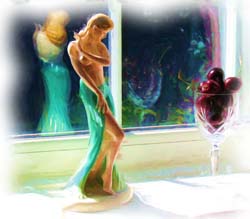One of the Vindolanda museum articles was a small fragment of a clock/calendar device. I found it fascinating.
This bronze fragment was found during excavations between the east granary and the principia (headquarters building) in 2008.
On it can see written SEPTEMBER, K(alendae), N(onae), ID(us), and AE (quinoctium). These letters clearly indicate that it was part of a timekeeping device or calendar. The ides were the first day of the month, the nones of September fell on the fifth, and the ides of September occurred on the thirteenth and the autumn equinox was on or near the twenty-third.
When complete the calendar would have been a circular disc about 30cms in diameter. Every two days a peg (not found) would have been moved into the next hole, indicating the correct date.
The exact nature of the particular device, of which this fragment was a part, is unclear. Cicero wrote a personal calendar into which a peg was inserted to mark the date (Att. 5.14.1,, 15.1). This fragment may have been part of a similar calendar, however the Roman architect and engineer Vitruvius (De arch. X8.8-15) wrote about a much more complicated device which was meant to measure varying of day and night-time hours throughout the year, the so-called anaphoric water clock (Latin: horologium hibernum) and an alternative theory is that this fragment could have been part of a similar mechanism. This is one of only three ancient portable calendars ever found, joining a Celtic one engraved on a bronze tablet unearthing in Coligny, France in 1897, and a Roman bronze menologium (register of months) from a well at the site of le Cagnot at Grand, France, in 1886.
The Vindolanda calendar is however unique and the first object of its type to come from Roman Britain. Whatever the original instrument looked like, this small piece give us an insight into the means by which life on the frontier was structured and the importance of remaining synchronised with the outside world.*
*From a signboard next to the clock fragment









the text was very helpful to understand the image, CP.
I found the exhibit fascinating
Absolutely fascinating – really enjoyed reading all about the exhibit. Amazing that only a few such devices have been found.
It is amazing that this device has been found for us to study and wonder at after all these years…
This is fascinating, sometimes I want to go back in time with some machine and find out about those things….
There are some really interesting artifacts in the museum
Vindolanda makes me hungry?
Isn’t it an Indian curry?
Ha, it’s Vindaloo!
Maybe it was invented by the Romans?
I think the Romans had a different menu